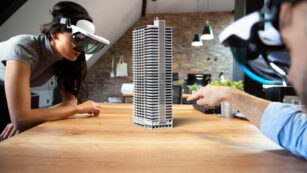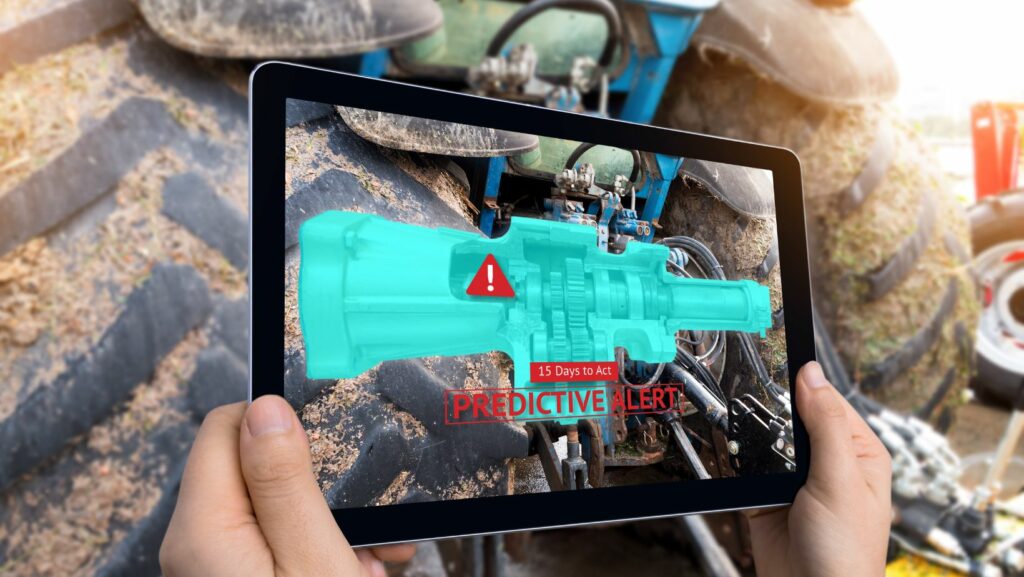Augmented reality (AR) is transforming how we interact with the world around us, merging digital content with the real world in exciting, dynamic ways. From enhancing retail shopping experiences to revolutionizing educational tools and gaming, AR is proving to be a game-changer in numerous industries. It’s not just for tech giants and game developers anymore; businesses of all sizes are finding innovative ways to incorporate AR into their operations.
Create Augmented Reality Experiences
Augmented Reality (AR) blends digital components with the real environment, enriching users’ perception and interaction. This section dives into the principles of AR and outlines the distinctions between AR, Virtual Reality (VR), and Mixed Reality (MR).
The Basics of Augmented Reality
 The foundation of creating AR experiences lies in understanding its core components: AR software, digital content, and user interaction. AR software, like ARKit for iOS and ARCore for Android, tracks the physical environment via the camera to place digital objects accurately. Digital content can range from simple text notifications to complex 3D models that interact with the physical world. The user interacts with this digital content through various inputs such as touch gestures or voice commands.
The foundation of creating AR experiences lies in understanding its core components: AR software, digital content, and user interaction. AR software, like ARKit for iOS and ARCore for Android, tracks the physical environment via the camera to place digital objects accurately. Digital content can range from simple text notifications to complex 3D models that interact with the physical world. The user interacts with this digital content through various inputs such as touch gestures or voice commands.
Augmented reality operates by overlaying digital information on real-world scenes. It recognizes objects and surfaces, positions digital objects appropriately, and adjusts their scale and perspective in accordance with the user’s view.
Differences Between AR, VR, and Mixed Reality
-
Augmented Reality (AR) adds digital elements to a live view often by using the camera on a smartphone. Examples of augmented reality experiences include Snapchat lenses and the game Pokémon Go.
-
Virtual Reality (VR) offers a completely immersive experience that shuts out the physical world. Using VR devices such as Oculus Rift or Google Cardboard, users can be transported into numerous real-world and imagined environments.
-
Mixed Reality (MR), also known as Extended Reality, combines elements of both AR and VR, where real-world and digital objects interact.
Tools and Technologies for Creating AR Experiences
Software Kits and Platforms
 Various software kits and platforms provide the foundation for crafting AR experiences. One popular choice is ARKit, developed by Apple, which offers robust support for environment understanding, motion tracking, and light estimation on iOS devices. Google’s ARCore serves Android users similarly, enabling augmented reality capabilities on supported devices with its focus on motion tracking, environmental understanding, and light estimation. For those seeking cross-platform solutions, Unity’s AR Foundation integrates both ARKit and ARCore, facilitating the development of AR apps that work on multiple operating systems. Microsoft’s Mixed Reality Toolkit, although primarily used for VR, includes components that support AR for developers working with Windows Mixed Reality.
Various software kits and platforms provide the foundation for crafting AR experiences. One popular choice is ARKit, developed by Apple, which offers robust support for environment understanding, motion tracking, and light estimation on iOS devices. Google’s ARCore serves Android users similarly, enabling augmented reality capabilities on supported devices with its focus on motion tracking, environmental understanding, and light estimation. For those seeking cross-platform solutions, Unity’s AR Foundation integrates both ARKit and ARCore, facilitating the development of AR apps that work on multiple operating systems. Microsoft’s Mixed Reality Toolkit, although primarily used for VR, includes components that support AR for developers working with Windows Mixed Reality.
Important Hardware Components
Developing AR experiences also requires specific hardware, which may vary based on the platform and the complexity of the desired application. Essential hardware includes smartphones with AR-capable cameras and processors, such as the latest models of iPhone or high-end Android devices that support ARCore. For more advanced or professional-grade applications, AR headsets like the Microsoft HoloLens offer a hands-free, immersive experience by blending high-definition holograms with the real world.
Design Principles for AR Experiences
Enhancing User Interaction
 Effective AR experiences hinge on optimized user interaction. Designers ensure interactions are intuitive by minimizing the learning curve for users. Gestures such as tapping, swiping, and pinching are commonly used for navigation and control in AR interfaces. Feedback mechanisms, like visual or auditory cues, confirm user actions, enhancing usability and satisfaction. Developers also focus on creating a responsive design that adjusts to various user inputs and environments seamlessly. A prime example includes games like Pokémon Go, where players interact with virtual creatures superimposed onto the real world using simple gestures on their smartphones.
Effective AR experiences hinge on optimized user interaction. Designers ensure interactions are intuitive by minimizing the learning curve for users. Gestures such as tapping, swiping, and pinching are commonly used for navigation and control in AR interfaces. Feedback mechanisms, like visual or auditory cues, confirm user actions, enhancing usability and satisfaction. Developers also focus on creating a responsive design that adjusts to various user inputs and environments seamlessly. A prime example includes games like Pokémon Go, where players interact with virtual creatures superimposed onto the real world using simple gestures on their smartphones.
Integrating Physical and Virtual Elements
The integration of physical and virtual elements is critical in AR. This design principle ensures that digital enhancements look and behave naturally within the user’s environment. Spatial awareness technologies enable AR devices to understand and map the physical space around them. Developers use this mapping to anchor virtual objects accurately in the real world, which can be seen in applications such as IKEA Place that allows users to visualize furniture in their own home. By aligning digital objects with physical laws and perspectives, AR creates a more cohesive and believable experience.

